A gorgeous garden is not enough. If you enjoy bringing more music and joy to your yard, shrubs that attract birds are the best way. You don’t have to be a birdwatching fan for these plants. They add beauty, color, and life to your garden.
Not all types of shrubs are the first choice for birds, and the ones that do tend to have a command over birds for varying reasons. There are shrubs that birds head to for shelter, nesting, or food. Plants also captivate diverse bird species. The right greenery may depend on where you live as much as the birds you hope to intrigue.
Boost wildlife near you by making your home something they appreciate. You don’t have to work hard to add more life and beauty to your yard. Read on to learn which plants are enticing wild for birds and how to care for each.
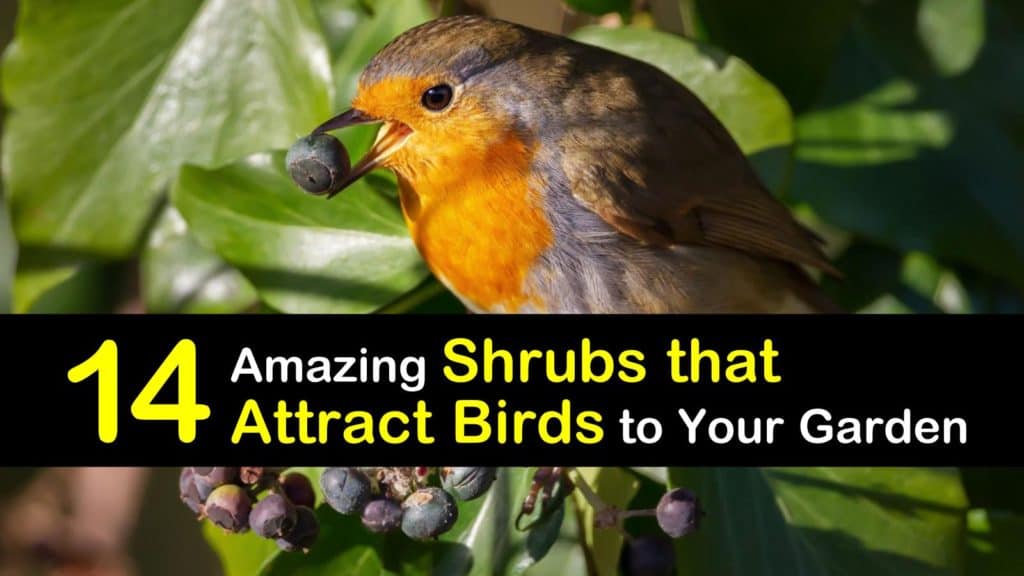
- How do Shrubs Increase Birdlife in the Garden?
- Gorgeous Shrubs that Attract Birds
- Arrowwood Viburnum (Viburnum dentatum)
- Elderberry (Sambucus spp.) – Can be Toxic to Humans and Pets
- Rose of Sharon (Hibiscus syricus)
- Flowering Dogwood (Cornus florida) – Diverse Benefits
- Common Winterberry (Ilex verticillata)
- Trumpet Honeysuckle (Lonicera sempervirens) – Contributes to Hummingbirds
- Wild Blackberry (Rubus rugosa)
- Staghorn Sumac (Rhus thyphina) – A Bird Favorite
- Virginia Creeper (Parthenocissus quinqefolia)
- Milkweed (Asclepias spp.) – Not Only for Monarch Butterflies
- Lilacs (Syringa spp.)
- Buttonbush (Cephalanthus occidentalis) – Great for Wildlife
- Northern Bayberry (Myrica pensylvanica)
- Downy Serviceberry (Amelanchier arborea) – Native Trees or Shrubbery
How do Shrubs Increase Birdlife in the Garden?
Planting native trees, annuals for hummingbirds, and shrubs that attract birds are one of the most practical ways to make your home more bird-friendly. Of course, you don’t want to spend time getting rid of birds living in walls of your home or outbuildings. Ensure proper sealing of structures to keep them out.
However, having birds outside can be pleasant. Some bushes and plants offer a food source for birds, like seeds, flowers, buds, nectar, or berries.
Others provide shelter or nesting sites where the birds can build their homes for the season. Birds look to their surroundings for food. The shrubs you select have ripening fruit at varying times of the year, so the season could affect the animals you hook.
For more birds in your garden, consider your location as well. Concentrate on native plants to your country and region, which are less likely to include invasive species.
Some plants are also more helpful than others when it comes to your environment or the species they charm. Native shrubs evolve with these animals over time, so their relationship is more beneficial.
These plants are more likely to come with nutritional values and the sizes your area requires. Exotic plants may feed birds, but they also grow to take over neighboring plants and damage nearby ecosystems.
There is more than a single solution for your garden. Many areas, for example, show widespread loss of insects and natural shelters for birds. Suburban homes often have manicured lawns rather than native plants.
Certain types of birds even rely on humans for birdhouses each year. Planting more natural shrubs to increase wild bird’s habitats promotes a healthier ecosystem.
No matter how large or small your property, there are options for you to help save wildlife. Search for gardening recommendations for your specific zip code to learn which native vegetation to plant in your garden.
Think about not only the birds but other types of animals, too. Plant annuals, perennials, grasses, trees, and shrubs to attract wildlife of all types.

Other Ways to Lure Birds
Plants may also not be the prime choice to lure birds to your garden, depending on where you live. Other opportunities, like avoiding spraying any chemical pesticides and removing non-native plants that already exist, are a considerable start.
Another enormous tool is to provide food and water. Bird feeders and birdbaths are easy to install or make yourself. If you live in the southwest, where water is the primary source that is not widely available, a clean water feature or xeriscaping may be the solution.
In these locations, water even works better than plants. Finally, you might add shelter if the plant does not already protect birds. Birdhouses afford shelter from the winter or severe storms, and they suggest that the animals lay their nests and stay awhile.
Gorgeous Shrubs that Attract Birds
Search for the right shrubs that attract birds for your garden, depending on which species are native to your location. Think about the birds near you and what would help them.
Plant a mixture of shrubs, annuals, grasses, and perennials for birds in your area and you and your avian friends will be happy year-round.
Arrowwood Viburnum (Viburnum dentatum)
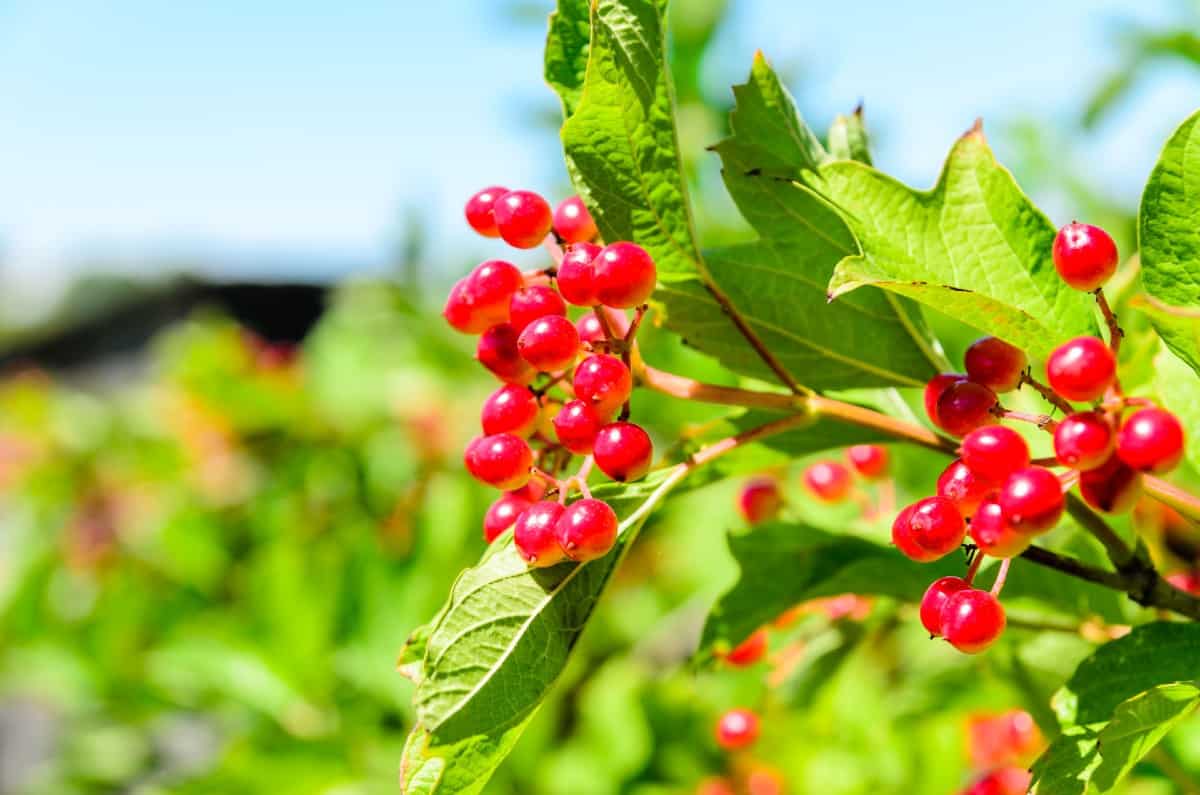
There are many viburnums for bird habitats. They function as nesting sites for small songbirds, and the shelter keeps the bright-colored berries safe during severe weather. You might see fruit in pink, blue, yellow, red, or even black.
Grow this shrub as forest understory. The flowers and foliage are appealing to the eye, and there are many kinds for each planting zone. Arrowwood Viburnum is beloved by many gardeners for shelter, nesting, and fall fruit.
Elderberry (Sambucus spp.) – Can be Toxic to Humans and Pets
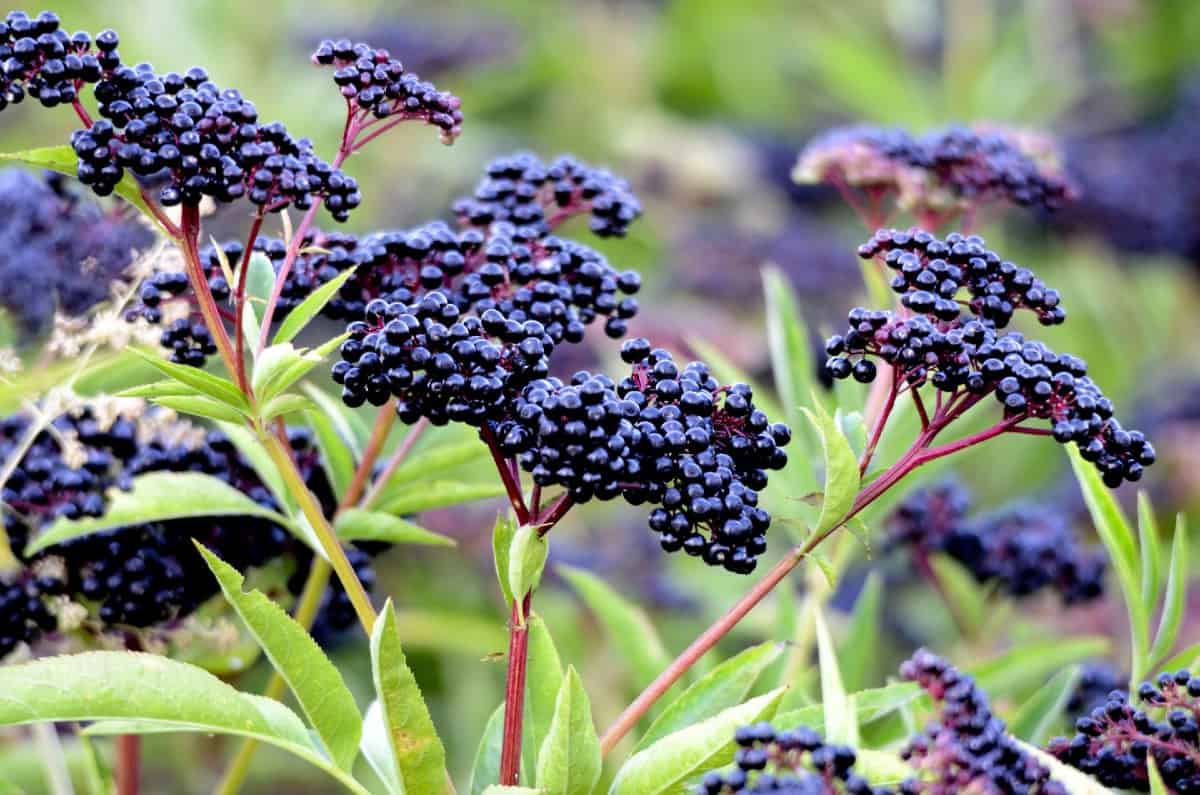
Elderberry is one of the fast growing shrubs and a beautiful plant for birds, but toxic if ingested raw by humans. These shrubs are small trees that draw insects and birds. The summer flowers and berries appeal to species like Eastern bluebirds, cedar waxwings, and robins.
Even the brown thrasher and red-eyed vireo come for the dark blue fruit. The Sambucus family all flowers and grows berries in the late spring and summer.
Some types offer gold foliage, like the ‘Sutherland Gold.’ Others have pink blossoms or dark purple leaves. The Sambucus canadensis has medical properties for treating cold and flu symptoms.
A sunny location is where to plant elderberries for the best crop, either for wildlife or for use in making jam or tinctures.
Rose of Sharon (Hibiscus syricus)
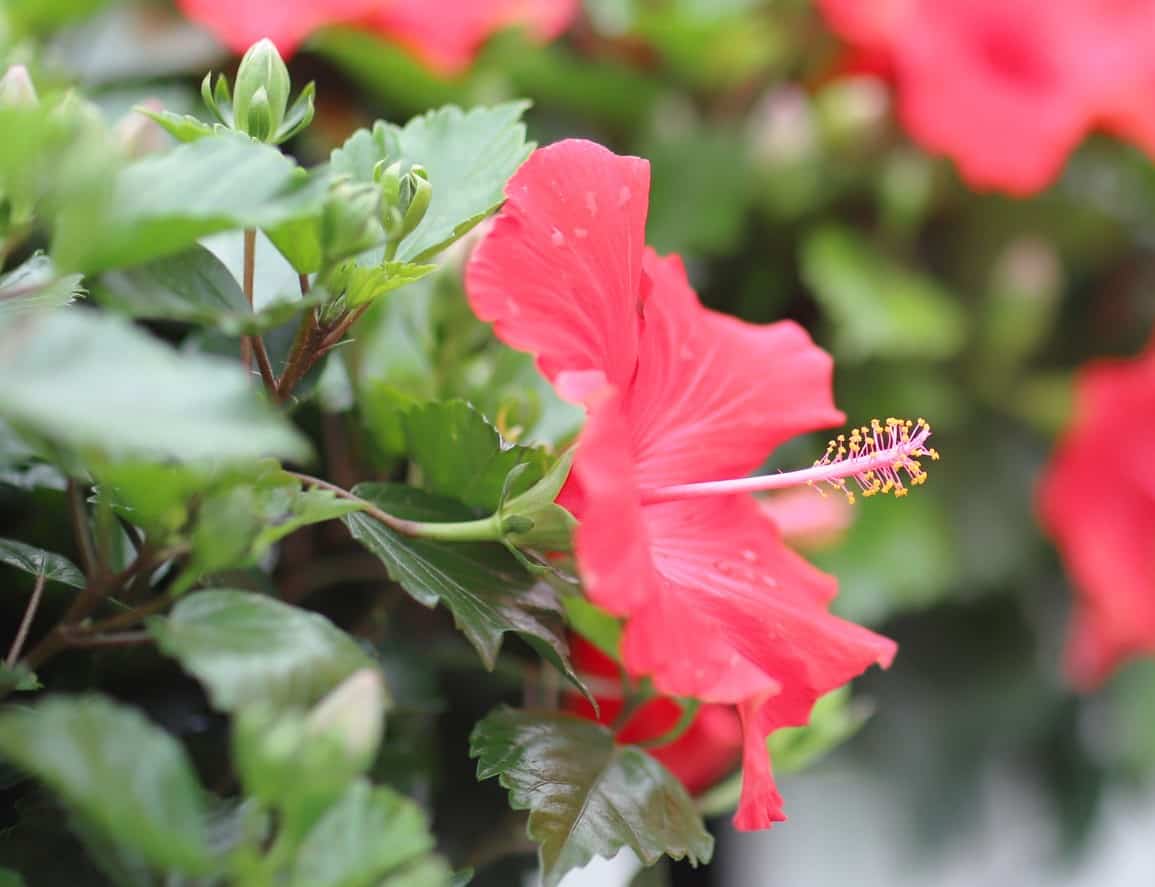
Hummingbirds seek out hibiscus for the sweet nectar inside the blooms. The stunning flowers put on a late summer show.
Different classifications depend on your planting zone and the color of your blooms, including popular options like ‘Aphrodite,’ ‘Rose of Sharon,’ ‘Helene,’ ‘White Chiffon,’ and ‘Lavender.’
Grow ‘Rose of Sharon’ Hibiscus for seeds throughout the winter. The deciduous shrub grows up to eight feet tall. Expect to see birds perch above and seek the birdseed from the ground during cold months.
Flowering Dogwood (Cornus florida) – Diverse Benefits
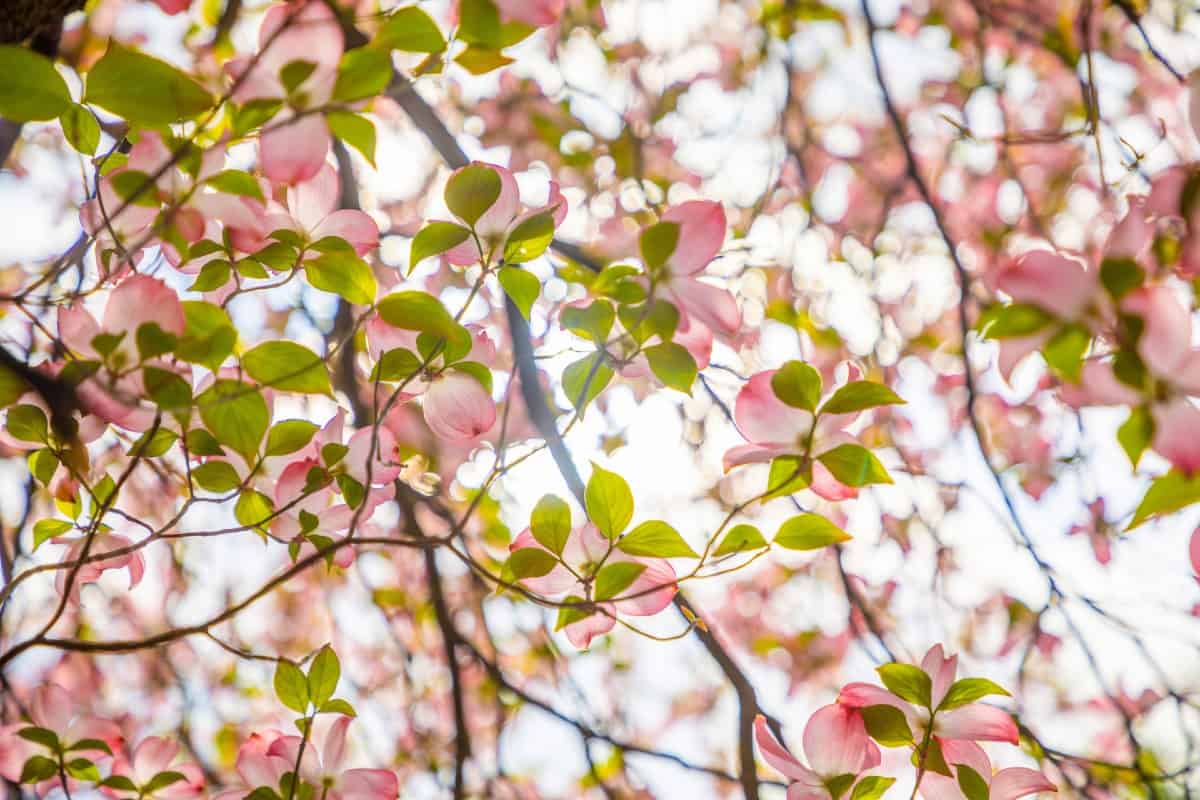
The flowers on a dogwood captivate insects, and birds then come to your garden to eat them. These trees birds love also produce fatty berries in the fall for many bird species.
Dogwoods come in trees and shrubs, from eastern to western varieties. Go with the all-season red-twig dogwood or the flowering dogwood, which are native to the United States.
Common Winterberry (Ilex verticillata)
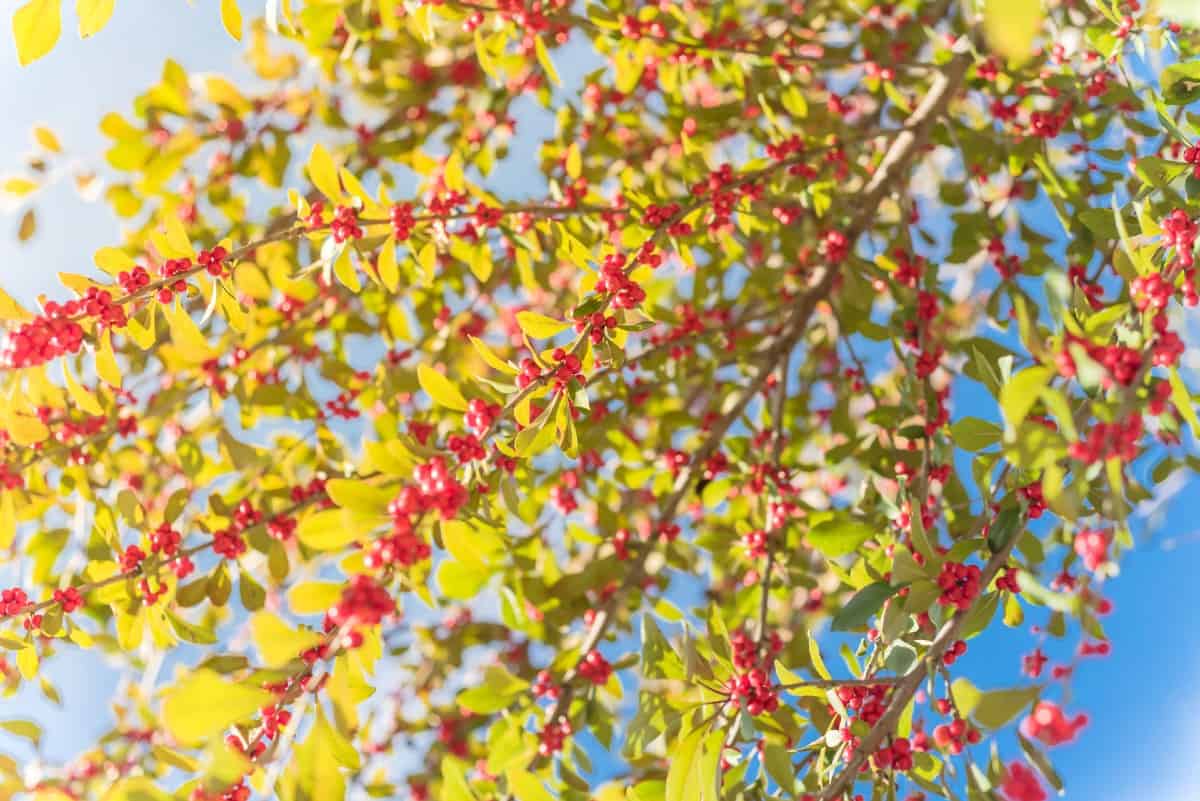
Winterberry is one of the low growing evergreen shrubs with nesting places and shelter year-round. It’s sometimes called holly because it produces holly berries in the late fall that last well into winter. This shrub and its scarlet berries also work as indoor Christmas decor.
However, these berries are highly toxic if people or pets ingest it. It’s best to plant your winterberry away from play areas. The hardy shrub thrives in wet conditions and influences bluebirds, robins, waxwings, and other birds.
Trumpet Honeysuckle (Lonicera sempervirens) – Contributes to Hummingbirds
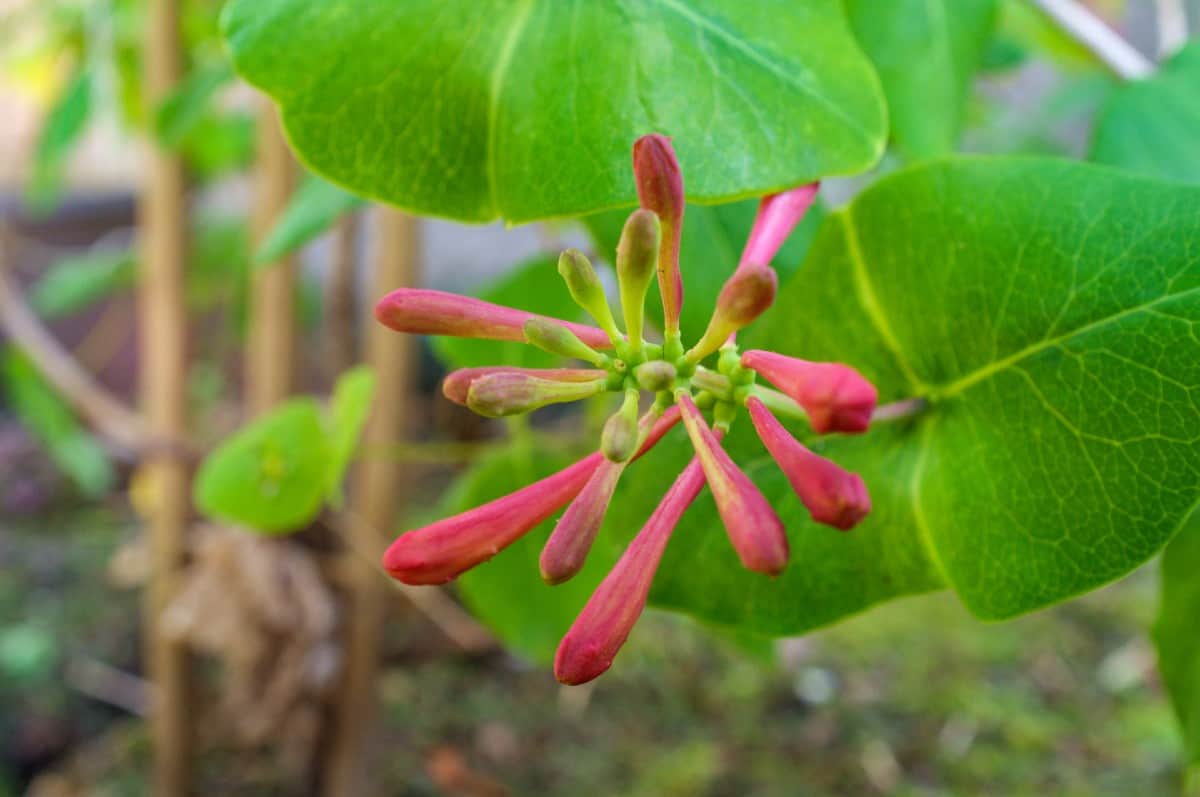
Trumpet honeysuckle is a well-behaving vine with red tubular blooms. The flowers are magnets for hummingbirds, but the plant is also a food source for purple finches, hermit thrushes, and Baltimore orioles. Birds enjoy eating the fruit and the flowers.
Grow trumpet honeysuckle in the midwest, northeast, or southeastern United States. It is an evergreen in warm climates and semi-evergreen in colder zones.
The shrub is the perfect native alternative to the invasive Japanese honeysuckle as well. Plant them along a fence or trellis.
Wild Blackberry (Rubus rugosa)
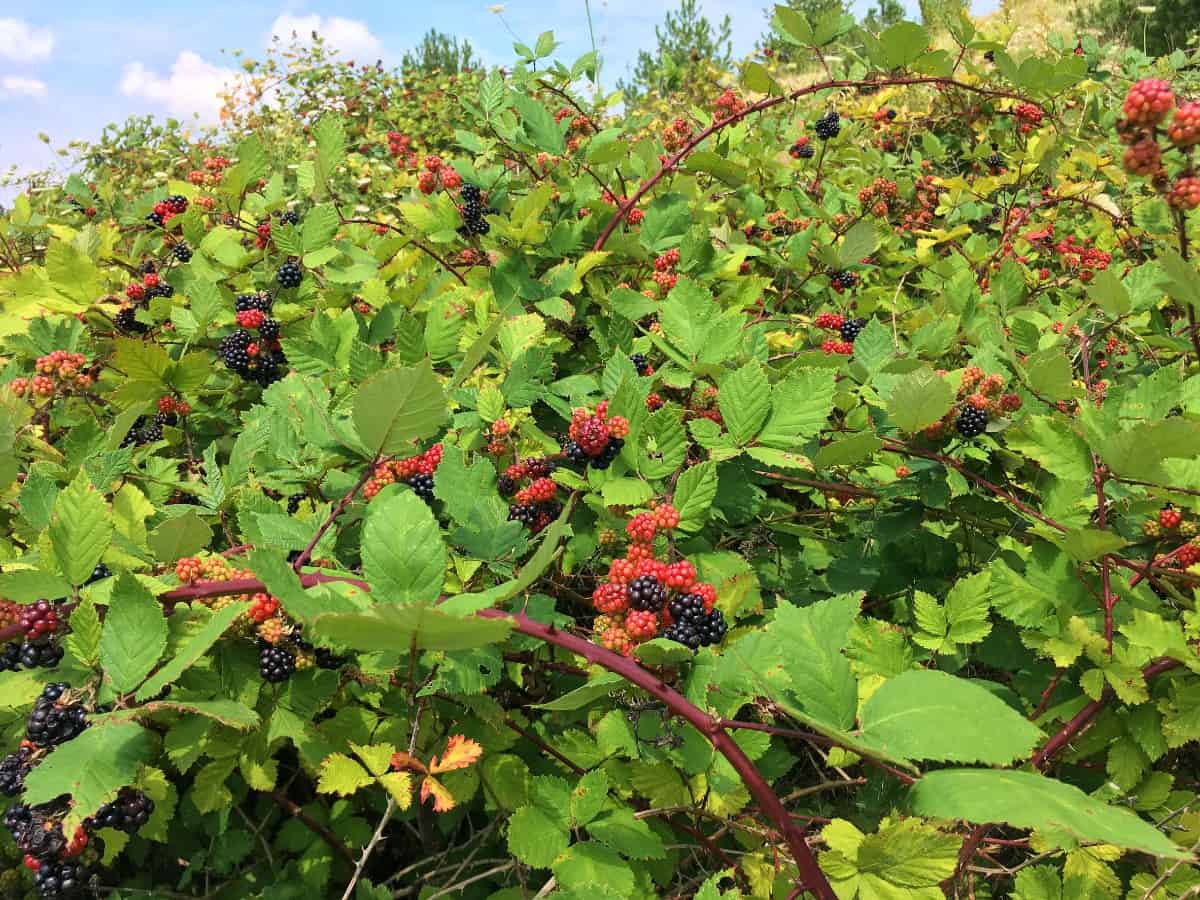
The wild blackberry offers fruit from late summer to fall. Besides the summer black berries, this bush allures insects to feed birds. The plant also grows in thorny brambles, which implement more cover to keep nests safe.
There are over 11 species in the United States, all of which grow well without much care. Wild black berries tend to have thorns. Avoid spraying the plant with pesticides, which repel wildlife. Spraying chemicals even make the berries less safe for humans to eat.
Learn the best way to grow blackberry bushes and plant a few in your yard. Pick the berries for yourself or let the birds have them.
Staghorn Sumac (Rhus thyphina) – A Bird Favorite
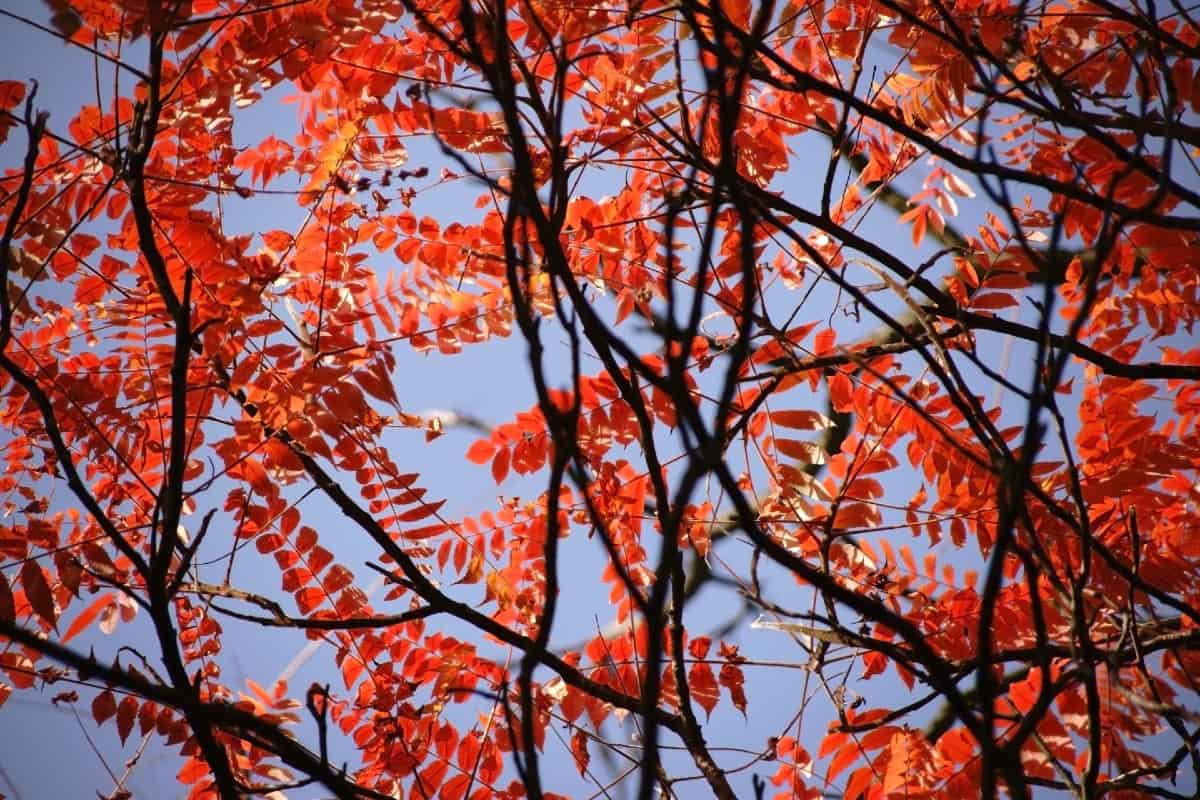
The Staghorn is not the only sumac birds love, but it is a decorative addition to the garden and one of the pretty plants for privacy in the back or front yard. The bright red autumn foliage is stunning.
The fruit clusters that ripen in August and September and last through spring are vital for winter birds. It also presents shelter against harsh cold temperatures.
The hairy red fruit, bright autumn foliage, and seeds that fall to the ground are crucial for birds. It is popular among chickadees, robins, catbirds, starlings, thrushes, pileated woodpeckers, cardinals, and tons of other birds.
Virginia Creeper (Parthenocissus quinqefolia)
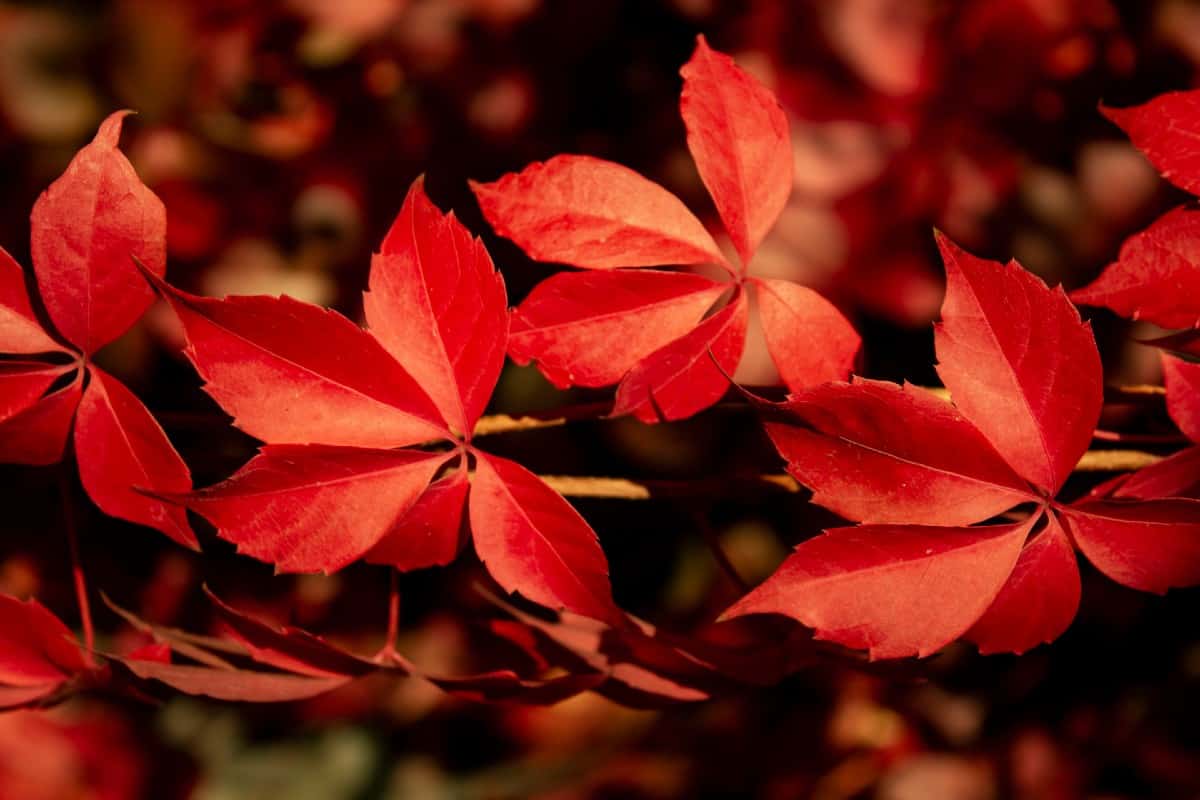
The Virginia creeper is a vine-like plant that tons of wild birds adore. Gardeners often seek out this plant to deliver more charm to their houses, without adding lots of maintenance.
The foliage is green in the warmer months and changes to a burgundy red in the fall. However, it is not the color of the Virginia creeper that attracts birds. The seeds are a primary food source for many winter birds.
Milkweed (Asclepias spp.) – Not Only for Monarch Butterflies
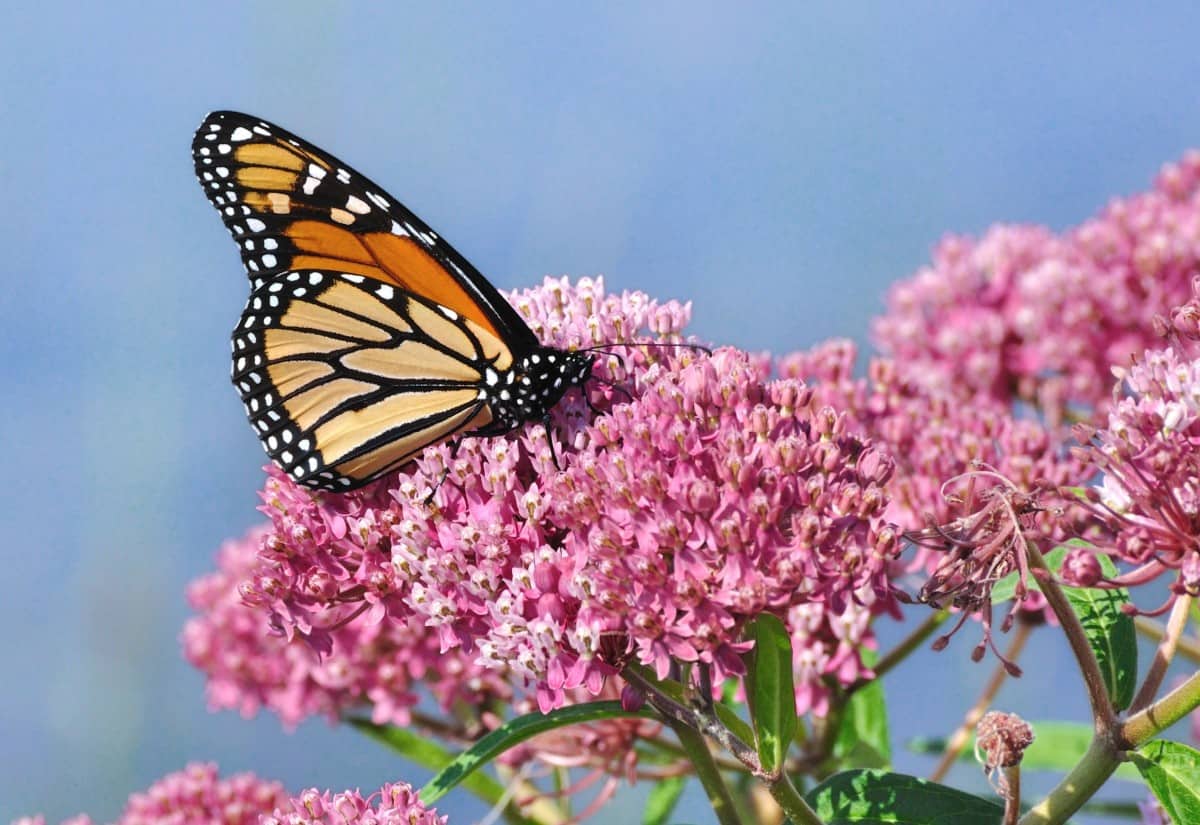
The milkweed shrub is a known home for Monarch butterflies and caterpillars. However, milkweeds also beckon insects to your garden.
Birds like the American goldfinch then follow to feast on the bugs. Goldfinches even take fibers and seeds from the plants to spin nests for their chicks.
Plus, the flowers on native milkweeds are stunning. Options like the butterfly weed (Asclepias tuberosa) are ideal for hot and dry places, while the swamp milkweed (Asclepias incarnata) is perfect for wet garden locations.
Lilacs (Syringa spp.)
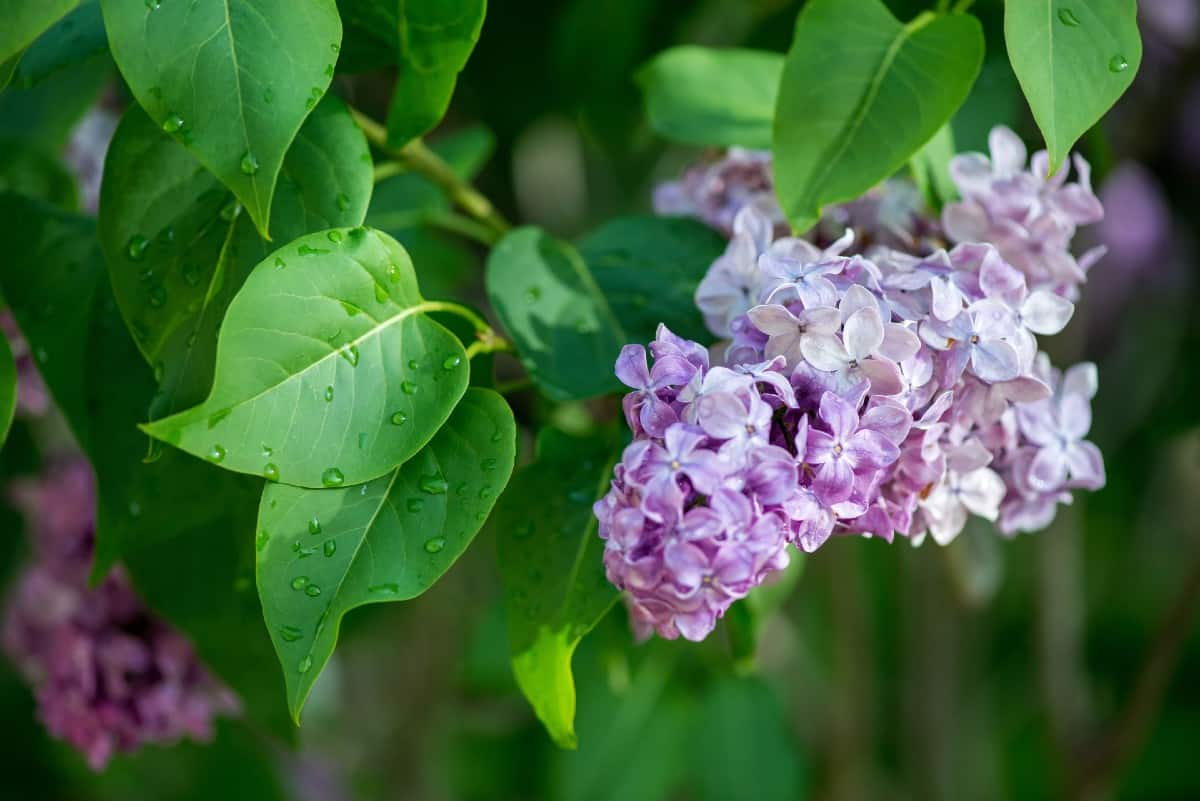
Lilacs are standard shrubbery in many planting zones. The nectar in the purple or pink flowers is food for hummingbirds, and placing nectar feeders near your bushes can help you bring in more hummingbirds to your garden.
The favorite part about lilacs is that the blooms smell intoxicating. Cut off a bushel to place in a vase in your house, and the entire room fills with the sweet fragrance.
There are early lilacs like Syringa hycinthiflora or late-season hybrids, such as the Syringa prestonia.
Buttonbush (Cephalanthus occidentalis) – Great for Wildlife
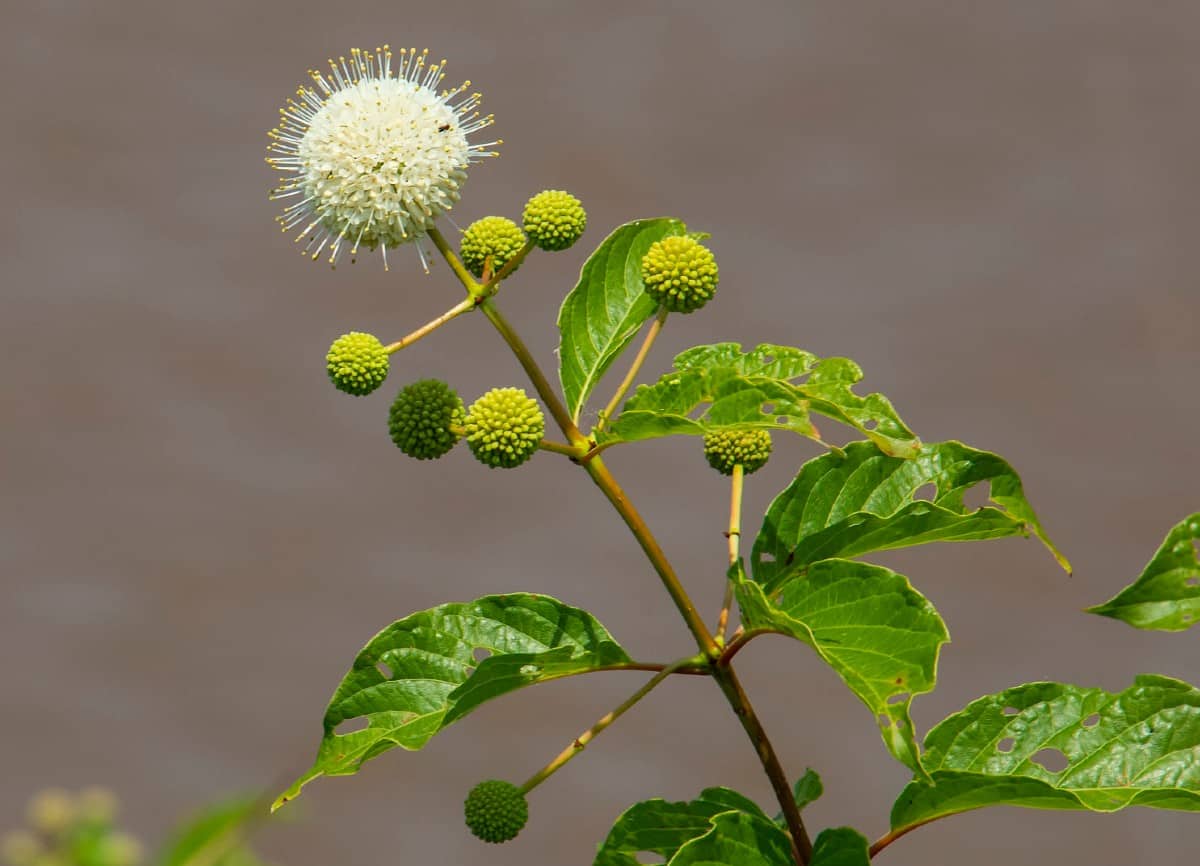
A popular native shrub, buttonbush has showy flowers and fruit for birds. It grows well near a pond shore where other animals like waterfowl and ducks revel in the seeds.
The flowers even feed beneficial pollinators in the middle of summers like butterflies, hummingbirds, and bees.
Plant buttonbush if you live near the wetlands in California or the eastern portion of the United States. The red-brown seeds should last through the winter to feed water birds. You might prune the shrub once in a while to keep it manageable.
Northern Bayberry (Myrica pensylvanica)
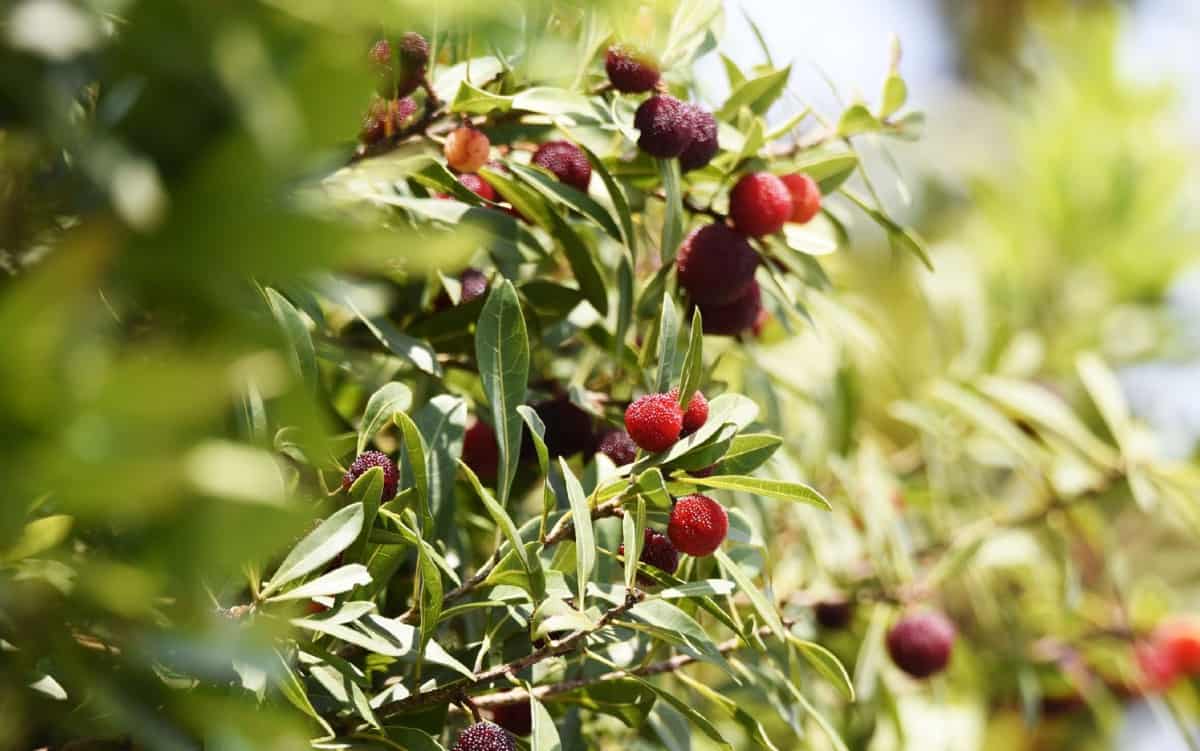
The Northern Bayberry is a shrub with fall fruiting that persists into winter. This plant is a semi-evergreen with fragrant silver berries that you see on the foliage all year.
It even provides shelter and a cover for nesting sites. Wintering birds like tree swallows, catbirds, and bluebirds are fond of the bayberry.
As the name suggests, plant this option in climates like the northeastern region of the United States. The foliage is dense enough to plant it as a privacy hedge.
Downy Serviceberry (Amelanchier arborea) – Native Trees or Shrubbery
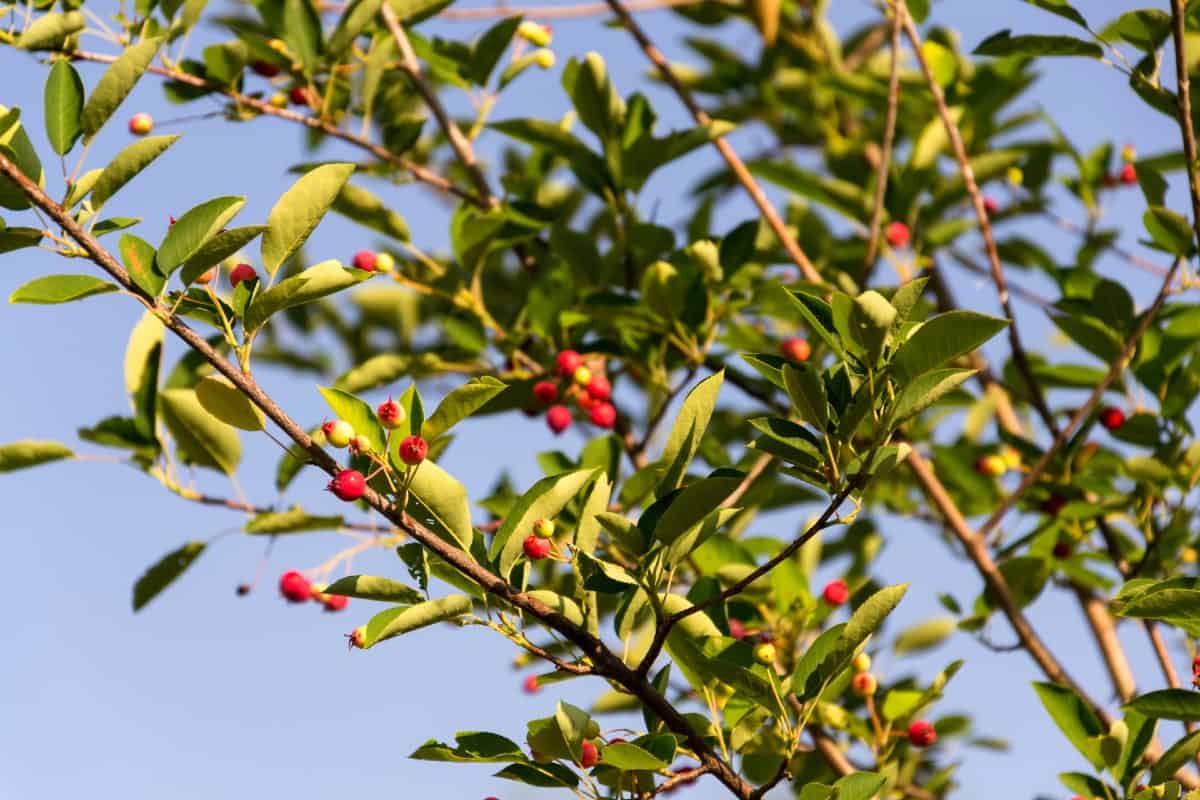
The serviceberry or shadbush family of shrubs has flowers and red fruits for birds and covers for nests. Wildlife habitat aficionados adore serviceberries for their height, as they can grow up to 60-feet-tall.
The Amelanchier family is full of many varieties, but the small tree-sized downy serviceberry is a gorgeous addition to bring birds to your garden.
Expect to see cardinals, tanagers, grosbeaks, robins, and waxwings after the fruit in the summer or building nests. Plant the serviceberry as understory in a natural evergreen setting. The trees grow up to 25-feet-tall at full maturity.
Many of the plants mentioned here are breathtaking, making them a double whammy for you.
Imagine how gorgeous your home will become with attractive foliage and birdsong year-round. Grow them in a container or directly in the soil. Enjoy the animals each morning.
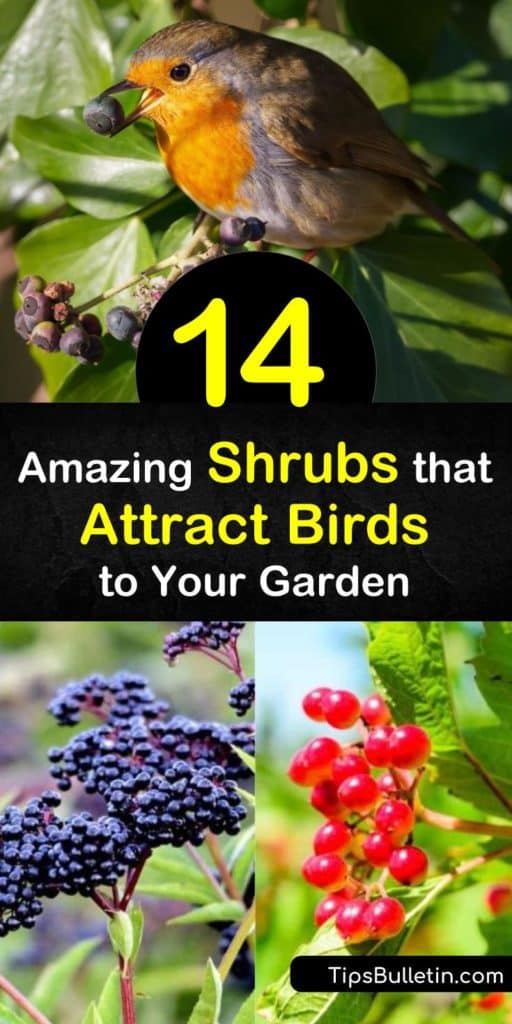
Which trees or plants are in your yard? If you found our list of shrubs that attract birds helpful to your search, please share the plant tips on Pinterest and Facebook.